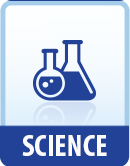|
This section contains 325 words (approx. 2 pages at 300 words per page) |
The Cardiac Cycle
Okay. So, what exactly happens during the diastole phase"
Well, as it was mentioned above, during this stage both the atria and ventricles are relaxed, while blood is entering the heart. Specifically, the blood enters into the left and right atria. The atrioventricular valves, valves composed of endocardium and connective tissue, are open, allowing the blood to flow from the atria to the ventricles. Then, the sinoatrial node, a section of nodal tissue that's located on the upper wall of the right atrium, sets the contraction rate of the heart, and starts atrial contraction, pushing the last of the blood into the ventricles. Finally, the semilunar valves (located between the aorta and left ventricle, and the pulmonary artery and right ventricle) close, preventing blood to flow back into the atria
And the systole phase"
Mainly in this phase, the ventricles begin contraction, pumping blood to the arteries, and the arteries carry it to the rest of the body, only to bring it back again to start the cycle once more. After the ventricle contracts, the atrioventricular valves close, and the semilunar valves open, allowing passage for the blood to enter the aorta and pulmonary artery. The aorta carries it to the limbs, head, neck, and other body parts, while the pulmonary artery takes it to the lungs.
And then the process is repeated over and over again! Now that you think of it...the heart is a pretty strong muscle, isn't it?
Most definitely.
|
This section contains 325 words (approx. 2 pages at 300 words per page) |


